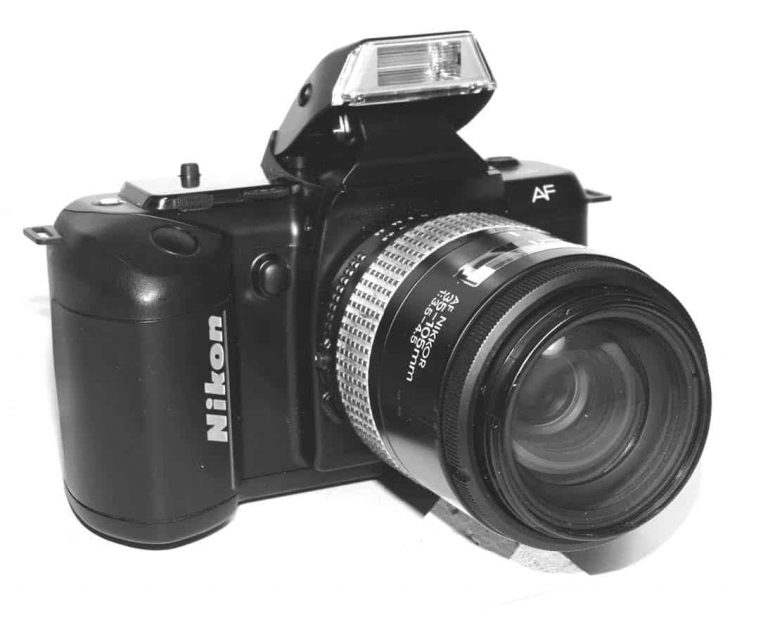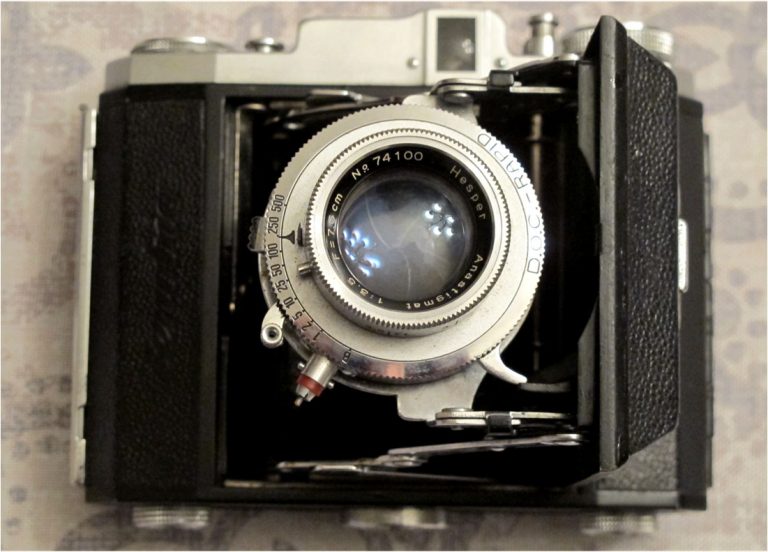Although the Mercury CC-1500 camera appears identical to the standard Mercury CC model (CC stands for Candid Camera), there is a significant difference between the two. What separates this model from the standard Mercury CC is its top shutter speed of 1/1500 second, unheard of at the time. Let’s see what led up to this rare model.
Manufactured by the Universal Camera Corp. of New York from 1939-1941, the Mercury CC, cast from an aluminum alloy and covered with leather, was one of the most interesting, unusual and innovative designs of the time. The rounded protrusion on top was due to its unique rotary shutter with a top shutter speed of 1/1000 second, America’s fastest camera at the time. The Mercury CC was also the first camera to have internal flash synchronization (a hot shoe). The standard lens was the Tricor Anastigmat 35mm f3.5, and the cost of the camera was $25.00, a very reasonable price considering its features.
Although this is a half-frame 35mm camera, the film used was Univex 200 roll film, a 35mm film on a special geared spool. The film advance mechanism required the Univex geared spool in order to operate. Instructions for film loading and unloading can be found in the instruction manual available in Butkus’s Camera Manual Library website (pages 8-15).
The Mercury CC’s top shutter speed of 1/1000 was comparable to fine German cameras of the day; however the Contax II offered a maximum shutter speed of 1/1250. To compete, a higher-end version of the Mercury CC called the Mercury CC-1500 (named after its top shutter speed) came out in 1939 with a cost of $29.75.
(Above) Univex Mercury CC 1500 (1939-1941) – a half-frame camera with a 1/1500 top shutter speed, proprietary 35mm film cassettes, and internal flash synchronization from the “hot shoe” at top center over the lens.

The Mercury CC-1500 is considered quite rare. It was produced for only one year, with an estimated production of 3,000 cameras, compared to 45,000 for the standard Mercury CC model. The Mercury CC continued to sell well, but World War II caused Universal to cease production and they began manufacturing binoculars and other products for the duration of the war.
After the war, Universal decided to redesign the Mercury CC to accept standard 35mm film. The new model, slightly larger than the Mercury CC, would be known as Mercury II, without the “Univex” logo. Although popular, the new body was made from an aluminum-magnesium alloy and did not hold up well compared to the all-aluminum body of the Mercury CC. Newer models did not receive the recognition or acclaim of the Mercury cameras, and the company struggled financially, ultimately declaring bankruptcy and finally going out of business in 1952.
~ Story and photos by PHSNE member Richard Berbiar
What the heck…

Are Those Even Cameras?!
Join the PHSNE Newsletter and learn more about photographic history and preservation. Already an expert? Come and share your collections and knowledge as we celebrate the history and advancement of photography.







